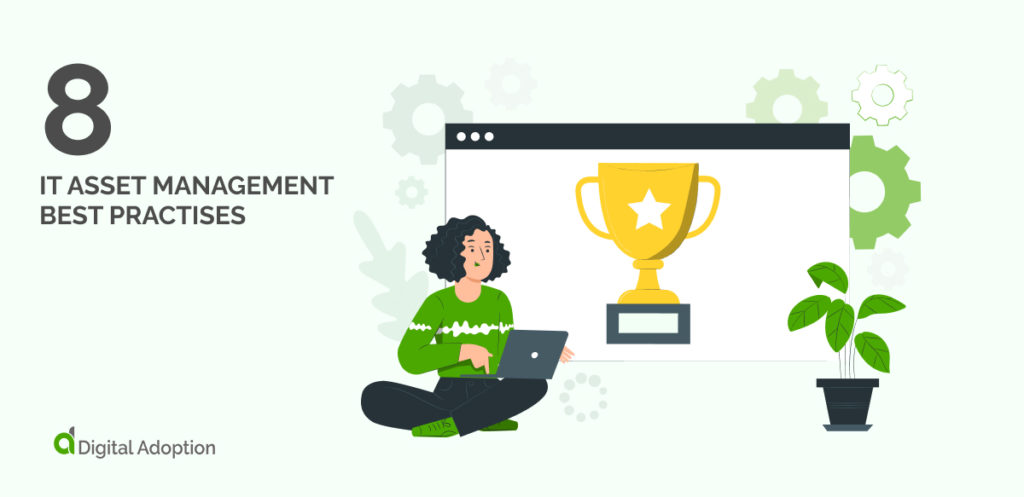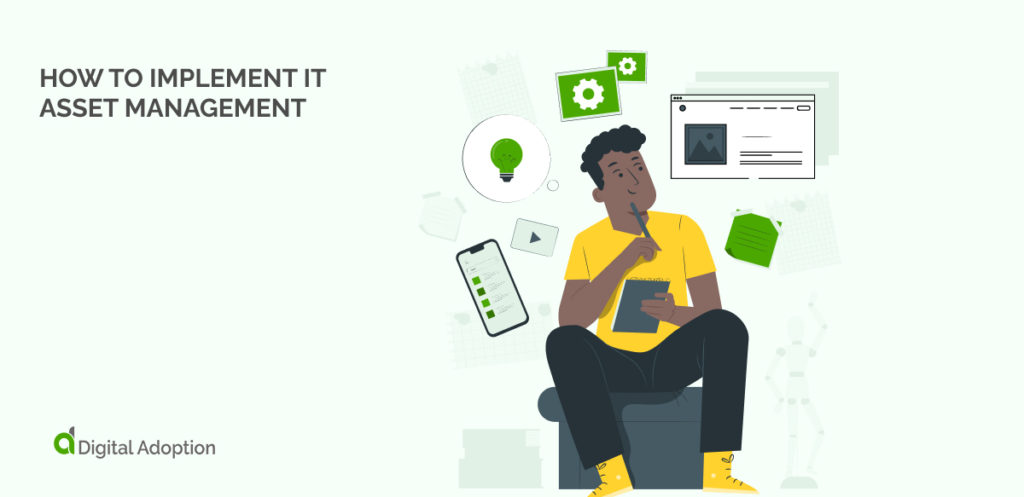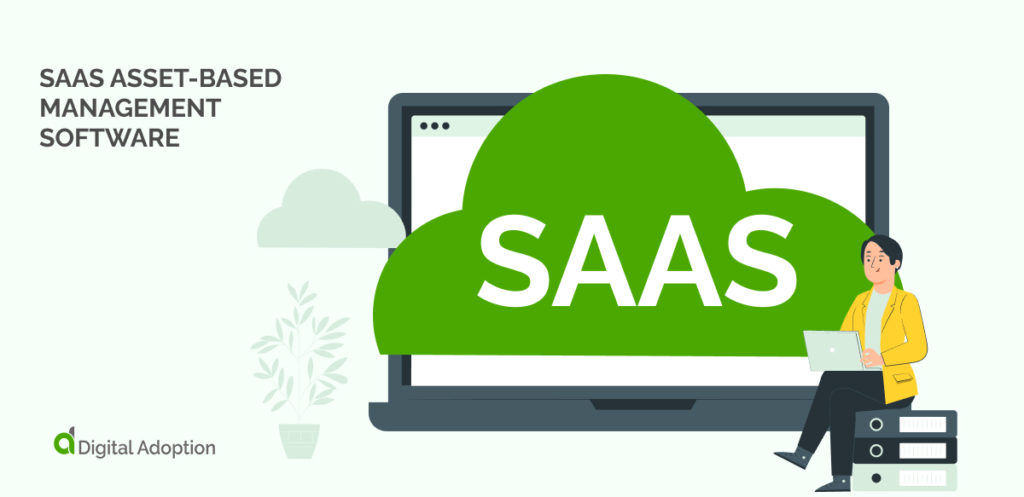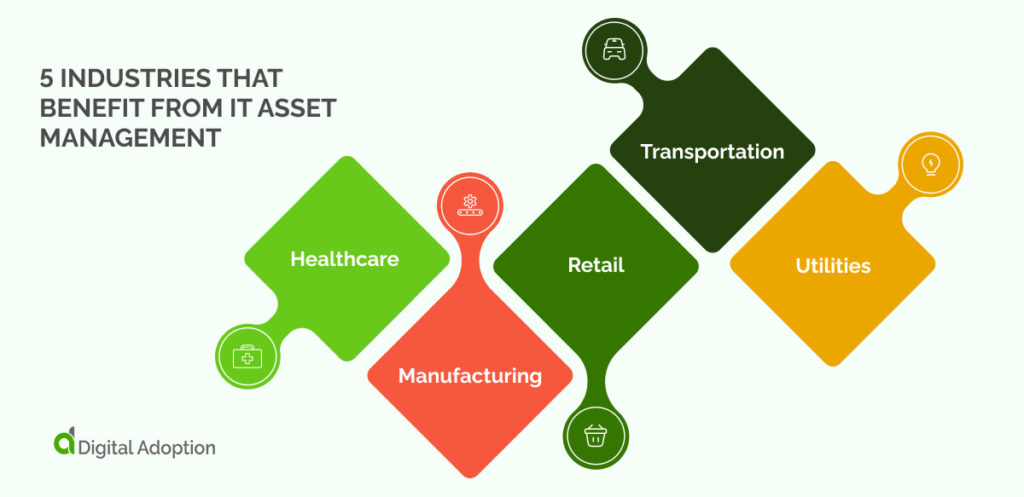IT asset management is the process of managing and tracking the physical devices and software applications within an enterprise. It’s important because it helps organizations track what they have, where it is, how it’s being used, and by whom. According to Gartner, IT asset management (ITAM) provides an accurate account of technology asset lifecycle costs and risks to maximize the business value of technology strategy, architecture, funding, contractual and sourcing decisions.
In the digital age, IT assets are the lifeblood of any organization. Computers, software, networks, servers, and data stores are all vital to business operations. Consequently, these assets must be appropriately managed and monitored using asset tracking software.
IT asset management covers everything from purchasing and licensing to deploying hardware assets and retirement. It must be tailored to the organization’s specific needs to be an effective form of IT transformation. This means there is no one-size-fits-all approach to IT asset management; each organization must devise its own strategy and financial management systems.
ITSM stands for IT service management and enables IT, teams to manage the delivery of their services to customers. ITSM includes all the activities and processes involved in designing, creating, providing, and supporting IT services.
There are, however, some best practices that all organizations should follow in the IT environment.
- The Eight IT Asset Management Best Practises
- The Benefits Of IT Asset Management
- How To Implement IT Asset Management
- IT Asset Managemet Framework
- IT Asset Management Tools
- IT Asset Management & Digital Transformation
- IT Asset Manager Roles & Responsibilities
- IT Asset Management For Technology Firms
- SaaS Asset-Based Management Software
- 5 Industries That Benefit From IT Asset Management
- The Future Of IT Asset Management
The Eight IT Asset Management Best Practises

1. Establish an IT asset management policy
An IT asset management policy is a document that outlines an organization’s approach to managing its IT assets. It should cover all aspects of the asset lifecycle, from procurement to disposal. It should also specify who is responsible for each stage of the process.
It’s important to have an IT asset management policy in place because it provides a clear framework for decision-making and ensures that everyone in the organization is working towards the same goal.
You can also argue that it’s a legal requirement. Organizations must keep track of their IT assets in many countries to comply with data protection and privacy laws. If you don’t have an IT asset management policy in place, you could be breaking the law.
2. Conduct a comprehensive inventory of your IT asset management system
An extensive inventory is the foundation of any good IT asset management or IT strategy. You can’t manage what you don’t know about, so having a complete and up-to-date record of your organization’s IT assets is essential.
The inventory should include details such as the make and model of each device, its serial number, who is using it, and where it is located. It should also include information about any software licenses associated with the asset.
Conducting a comprehensive inventory can be daunting, but various tools and techniques can make it easier. For example, you can use barcoding or RFID tags to track physical assets and discovery tools to scan your network and identify software applications.
3. Keep track of asset location and ownership
While it might seem like a no-brainer, keeping track of asset location and ownership is often overlooked. However, knowing where your assets are and who uses them is crucial, especially when mobile purchases are tracked using dynamic asset discovery techniques.
This information can be stored as part of the asset inventory. For example, you could include the location of each asset in the inventory database. This would make it easy to track down an asset if it goes missing and is a big part of your overall IT asset management solution or asset management program.
You could also assign ownership of each asset to an individual. This would ensure that responsibility for the asset is transparent and would help to prevent misuse and unauthorized access. This is particularly important because it can help to protect your organization against data breaches and other security hazards that threaten your day-to-day business practices.
4. Implement controls around asset usage
Implementing controls around asset usage is vital for two reasons. First, it can help to prevent unauthorized access and misuse of assets. Second, it can help you to track and manage asset utilization.
There are various ways to control asset usage. You could use access control lists (ACLs) to restrict who can access each asset. You could also use data loss prevention (DLP) tools to monitor and control how assets are used.
You could even implement usage policies that dictate how assets can be used. For example, you could forbid using certain asset types for specific tasks, which would help to ensure that assets are used in a way that is consistent with your organization’s goals.
IT democratization is a great way to encourage the cross-departmental workforce to engage in app building or software development.
5. Monitor asset performance
Monitoring asset performance is a vital part of asset management. You can identify issues and problems early by tracking how assets are used, allowing you to take corrective action before the problems become too serious.
You can use monitoring tools to track utilization levels and identify under-utilized assets. Or, you could use logging tools to track events and identify issues. You could also simply ask users how they are finding the asset. This can be done through surveys or feedback forms and can be used to improve the asset or make changes to how it is used.
6. Plan for asset retirement
A lot of businesses make the mistake of bypassing this step. They assume that once an asset is no longer needed, it can simply be thrown away. However, this is not the case.
When an asset is retired, you must ensure that data is wiped and the asset is disposed of properly. Failing to do this could lead to data breaches and other security threats. You also need to consider what will happen to the asset after it is retired. For example, you might want to sell, donate, or recycle.
Asset retirement can be complex, but it’s essential to plan for it nonetheless. By taking the time to retire assets properly, you can help to protect your organization and its data. Asset management is an ongoing process. As such, it’s important to regularly review and update the asset inventory, ensuring that it is accurate and up-to-date.
7. Make use of automation
Automation can be a valuable asset in any business, and asset management is no exception. There are various ways to automate asset management tasks. For example, you could use a tool to scan your network for assets automatically. This would help to ensure that the inventory is always up-to-date.
You could also use automation to monitor asset performance to identify issues and problems early on. Automation can also be used to control asset usage. For example, you could use a tool to block unauthorized access to assets automatically.
Automation can save you a lot of time and effort. It can also help to improve the accuracy of your asset management process. As such, it’s well worth considering for any organization.
8. Review and update the asset inventory
Reviewing and updating the inventory on a regular basis is crucial for effective asset management. As assets are added, removed, or changed, the inventory must be updated to reflect these changes.
There are various ways to update the inventory. You could do it manually, but this can be time-consuming and error-prone. Alternatively, you could use a tool to automate the process. This would help to ensure that the inventory is always accurate and up-to-date.
Updating the inventory might seem tedious, but it’s essential for effective asset management. By taking the time to keep the inventory up-to-date, you can help to ensure that your assets are being used effectively.
The Benefits Of IT Asset Management

There are many benefits to implementing IT asset management. Perhaps the most obvious benefit is that it can help you to save money. By knowing what assets you have and how they are being used, you can avoid duplication and waste.
IT asset management can also help to improve security. By keeping track of your assets, you can help to ensure that only authorized users have access to them. This can help to reduce the risk of data breaches and other security threats.
IT asset management can also help to improve efficiency. Knowing your assets and where they are, you can avoid wasting time searching for them. Additionally, by automating asset management tasks, you can free up time that can be better spent on other tasks.
Overall, IT asset management provides many benefits. By taking the time to implement it, you can help improve your organization’s efficiency, security, and cost-effectiveness.
How To Implement IT Asset Management

There are many ways to implement IT asset management. The exact approach you take will depend on the size and complexity of your organization. However, there are some general steps that you can follow to get started.
Define your goals
The first step is to define your goals. What do you hope to achieve by implementing IT asset management? Do you want to improve security? Reduce costs? Improve efficiency? Once you have defined your goals, you can begin to develop a plan.
Develop a plan
The next step is to develop a plan. This should include a list of all the assets you need to manage. It should also have a schedule for reviewing and updating the asset inventory. Additionally, the plan should identify who will be responsible for each aspect of the asset management process.
Implement the plan
Once the plan is developed, it’s time to implement it. This will require some work on your part, but it’s crucial to get started. Begin by creating an inventory of all your assets. Then, put procedures in place for reviewing and updating the inventory by ensuring that everyone responsible for asset management understands their roles and responsibilities.
Evaluate your progress
Finally, it’s critical to evaluate your progress. Are you achieving your goals? Are there any areas where the process can be improved?
IT Asset Managemet Framework
There are many different IT asset management frameworks available. The exact framework you choose will depend on your organization’s needs. However, all asset management systems should follow some broad codes of conduct.
The first principle is that asset management should be integral to your overall IT strategy. Asset management should not be treated as a separate process. Instead, it should be integrated into your overall IT strategy.
The second principle is that asset management should be proactive. Rather than waiting for problems to occur, you should take steps to prevent them. This might include implementing security measures or conducting regular audits.
And finally, the third principle is that asset management should be continuous. Asset management is not a one-time event. Instead, it should be an ongoing process. You should regularly review your asset inventory and update your procedures as needed.
IT Asset Management Tools
There are many different IT asset management tools available. The exact tools you choose will depend on your organization’s needs. However, all asset management systems should include some general types of tools.
The first type of tool is an inventory management tool. This tool will help you to keep track of all your assets. It should allow you to add and remove assets as needed easily. Additionally, the tool should generate reports that you can use to identify trends.
The second type of tool is a security management tool. This tool will help you to secure your assets. It might include features such as password protection or data encryption. It also might include features such as activity logging or intrusion detection.
The third type of tool is a cost management tool. This tool will help you to track the costs associated with your assets. It should allow you to determine which assets cost the most to maintain quickly. Additionally, the tool should provide reports you can use to decide where to allocate your budget.
IT Asset Management & Digital Transformation
Digital transformation is changing the way businesses operate. As more and more companies move to digital platforms, it’s worth considering how this will impact your asset management system.
There are a few key ways that digital transformation can impact asset management. First, it can make it easier to track and manage assets. This is because digital tools can provide real-time data about assets. Additionally, digital transformation can help to automate asset management processes, which can free up time for other tasks and help to improve security because digital tools provide better protection for assets.
By considering how digital transformation will impact asset management, you can ensure that your system is effective. As you can see, there are many different aspects to consider when it comes to asset management. However, if you keep these tips in mind, you can ensure that your system is effective.
IT Asset Manager Roles & Responsibilities
The roles and responsibilities of an IT asset manager vary depending on the nature of the organization. However, there are some general duties that all asset managers perform.
The first duty of an asset manager is to develop and implement asset management policies. These policies should be designed to meet the needs of the organization.
The second duty of an asset manager is to create and maintain an asset inventory. This inventory should include all of the organization’s assets. The third duty of an asset manager is to conduct audits. These audits should be performed regularly to ensure compliance with asset management policies.
The fourth duty of an asset manager is to provide reports. These reports should be provided to the organization regularly. They should include information about the status of the asset management system.
IT Asset Management For Technology Firms
Technology firms have a unique set of needs regarding asset management. This is because technology firms need to manage various types of assets. Additionally, technology firms often have a global presence. As such, they need to consider how to manage assets across different locations.
There are a few key considerations for technology firms when it comes to asset management:
Technology firms need to consider how to track and manage assets. This is because technology firms often have a large number of assets. Technology firms need to consider how to secure their assets because technology assets are often valuable and can be targeted by criminals.
Technology firms also need to consider how to manage assets across different locations, track and manage these assets, and comply with local regulations. With 43% of small technology firms failing to track assets and inventory effectively, investing in the right asset management solutions is becoming more critical than ever.
SaaS Asset-Based Management Software

SaaS Asset-Based Management Software is a type of software that helps businesses to manage their assets. This type of software can track and manage assets, secure assets, or cost-effectively manage assets.
SaaS Asset-Based Management Software can help businesses to improve their asset management processes. This type of software can provide real-time data about assets and allows companies to automate their asset management processes. This type of software can save time for other tasks and help to improve security because it provides better protection for assets.
5 Industries That Benefit From IT Asset Management

Several industries can benefit from IT asset management. These industries include:
Healthcare
Healthcare organizations need to track and manage a large number of assets, including medical equipment, patient records, and employee data, while ensuring that their assets comply with local regulations.
Manufacturing
Manufacturing firms must track and manage many assets, including raw materials, finished products, and production equipment. Additionally, manufacturing firms must ensure that their assets are adequately maintained.
Currently, 80% of equipment maintenance is reactive—while it should be proactive.
Retail
Retail businesses need to track and manage many assets, including inventory, store fixtures, and point-of-sale systems that help ensure their assets are appropriately secured. IT asset management software is an excellent way for retailers to keep track of their assets and perform proprietary audits on stock to check what is selling and what isn’t.
Capterra reports that around 1.1 Trillion Dollars of Working Capital Is Tied Up in Inventory—Equivalent to 7% Of US GDP.
Transportation
Transportation companies track and manage many assets, including vehicles, shipping containers, and cargo. The transportation industry is constantly changing, which means that transportation companies need to be able to adapt their asset management processes accordingly.
Utilities
Utility companies track and manage various assets, including power plants, water treatment facilities, and pipelines. An effective IT asset management plan ensures best practices are followed and that all the equipment is accounted for, lowering the chance of costly downtime or data loss.
The Future Of IT Asset Management
The digital shift has significantly impacted how businesses manage their assets. As enterprises move to digital operations, they need to consider how to manage their assets in a digital world. As the workforce becomes more mobile, businesses need to consider how to manage assets across different locations.
With the introduction of phygital technology, businesses must consider how to manage both physical and digital assets. This is because phygital assets can be used in physical and digital operations, which means companies must consider how to track and manage these assets.
The future of asset management is digital. Businesses need to consider how to manage their assets in a digital world to stay ahead of the competition. And with Industry 4.0 on the horizon, companies must be prepared for the changes this new era will bring.













